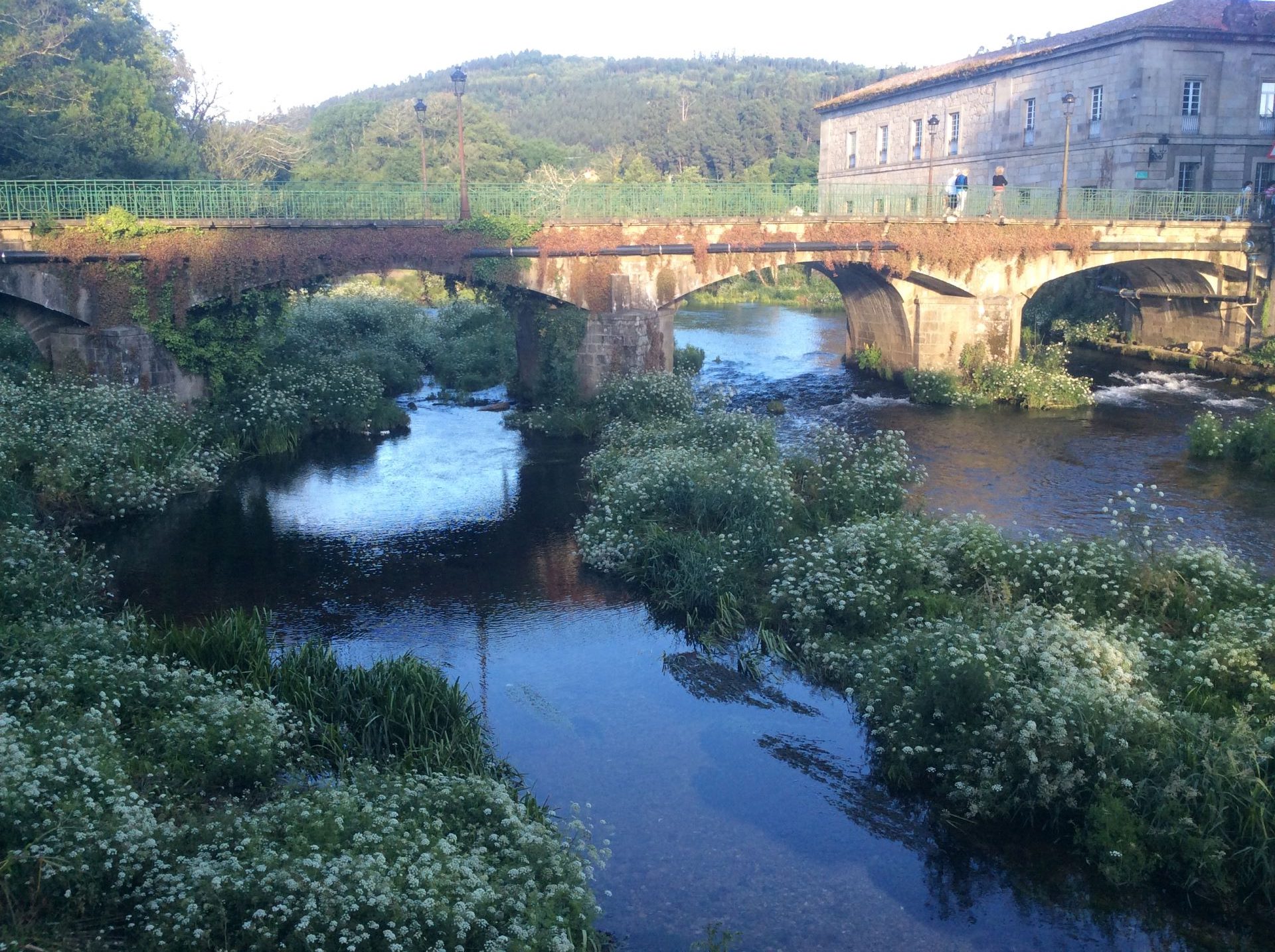
From the Camino: I don’t remember much about my stay in Padron. It is the last stopping place on the Camino Portugues, about 23 kilometers south of Santiago. – Fr. Jim and I ended up staying close to the train station. We were excited about walking into our destination the next day and decided to take it easy.
Regrettably, we never visited the Iglesia de Santiago. It has, under the altar, an upright large stone of significance for pilgrims to Santiago. According to the legend, after St. James proclaimed the Gospel in Galicia, he returned to the Holy Land. There, as portrayed in Acts 12:1-3, he was put to death with a sword by King Herod Agrippa, King of Judea from 41 to 44 AD. He was among the earliest martyrs, preceded in the New Testament only by Stephen (Acts 7:54-60. As there was a general persecution of Christians at this time, though, others may also have lost their life because of their faith.
Returning to legend, as recounted in the third book of the Codex Calixtinus, St. Jame’s body was carried away by two of his disciples, Teodomiro and Atanasio, who placed it in a boat that sailed from Haffa, guided by an angel, to the town of Iria Flavia, close to Mount San Gregorio, where James was supposed to have preached to the people of Galicia. To make the story all the more splendid, the boat was fashioned of a most unlikely material…stone. Sailing across and out of the Mediterranean Sea through the Pillars of Hercules, as the Strait of Gibraltar was once known, the boat made its way all around Spain to the estuary of Arousa, and into the River Ulla, up to the river Sar, which was still navigable in Medieval times. There it was moored at the large rock, or pedron, in what what known, at the time, as Iria Flavia.
Over the centuries, that rock was moved to the Church of Santiago, and the city changed its name from Iria Flavia to Padron, a variant of the Gallegan word for this big rock – pedron.[1]
Close to the Convento del Carme, an ancient Carmelite monastery now used by Dominican friars, marked by a pedestal with a cross, are over one hundred steps, with the Stations of the Cross, that lead up Mount San Gregorio to the lush, green holy site, Santiaguiño do Monte. It is here, tradition suggests, where St. James preached to the people of Galicia. There is a 15th Century hermitage there, over whose lintel is a depiction of St. James baptizing Queen Lupa. Inside the chapel is a statue of St. James whose hands have been very worn down by the caresses of pilgrims. This touch is still possible on the feast day of St. James when there is a romaría, or pilgrimage to the site. There is also a spring there, brought into existence when St. James, in a Moses-like act, struck the rock three times with his walking stick to provide water for a kind woman. Pilgrims in the past would have bathed in the miraculous spring before approaching this site, and a cave, in which the tradition suggests, St. James took shelter.
Since 2010 the credential of Padron has been restored. There was an old saying here, in Gallegan, O que ai a Santiago e non vai a Padrón ou fia romería ou non – “Those that go to Santiago and not to Padron may be pilgrims…or not!”
In the medieval pilgrimage, after having journeyed to Santiago, would often detour south to Padron, before heading north again to Muxía and Fisterra.
How I regret not having visited this extraordinary site!
Acts 1:6-8 – 6 When they had gathered together they asked him, “Lord, are you at this time going to restore the kingdom to Israel?” 7 He answered them, “It is not for you to know the times or seasons that the Father has established by his own authority. 8 But you will receive power when the holy Spirit comes upon you, and you will be my witnesses in Jerusalem, throughout Judea and Samaria, and to the ends of the earth.”
For reflection: The eleven remaining apostles, after the death and resurrection of Jesus, were comissioned by him to be his witnesses “to the ends of the earth” (Acts 1:8, above; see also Matt 28:16). Later traditions have the apostles heading out in a number of directions, Peter to Rome, where he was joined by Paul, Thomas to India, Andrew to Byzantium, Philip to Carthage, Matthew to Ethiopia, Bartholomew to Armenia, Simon to Persia, Matthais to Syria, John to Ephesus in Turkey, and so on.
It should be remembered that these men were not great in their day. They were largely from the peasant class, most illiterate (Paul was an exception), who addressed their teaching to their own class, that is, other peasants, who made up, by far, the bulk of the population of the Roman empire in their day. As a result, many traditions arose to fill in the empty places of their ministry after they exited the narratives of the New Testament. Some had greater notice because of the importance of the place they went, i.e., Peter to Rome, where traditions were able to be passed down.
Padron is as likely or unlikely as any other place for great things. In simpler, more trusting times, this was a place of miracles. Perhaps a miracle will happen for you in this place, or whatever place you find yourself as you read this. It would be a shame if we missed the miracles of our own daily life because of our rational skepticism. May God’s favors and graces (and miracles) be yours.
[1] The beautiful, and sometimes spicy, Padron peppers, come from this region.